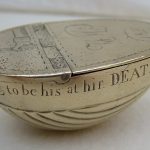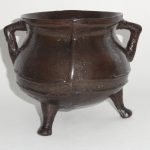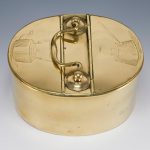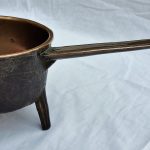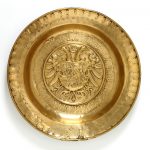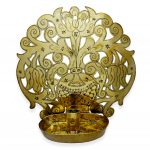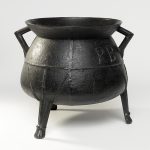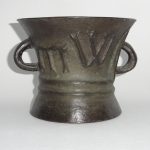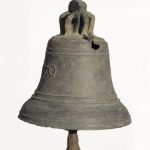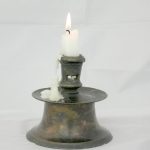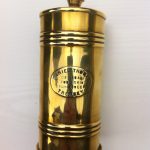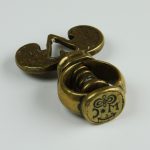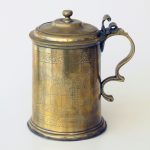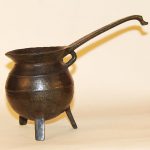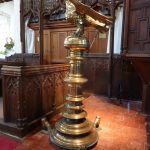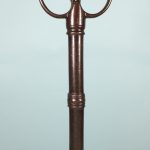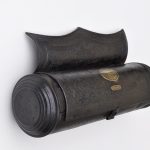Thomas Hatch Posnet

Explanation:
Posnets, like skillets, were mostly used for boiling and cooking food by pushing the pot into the ashes of the fire. Eventually skillets superseded posnets and by the late 17th century the production of posnets had virtually ceased.
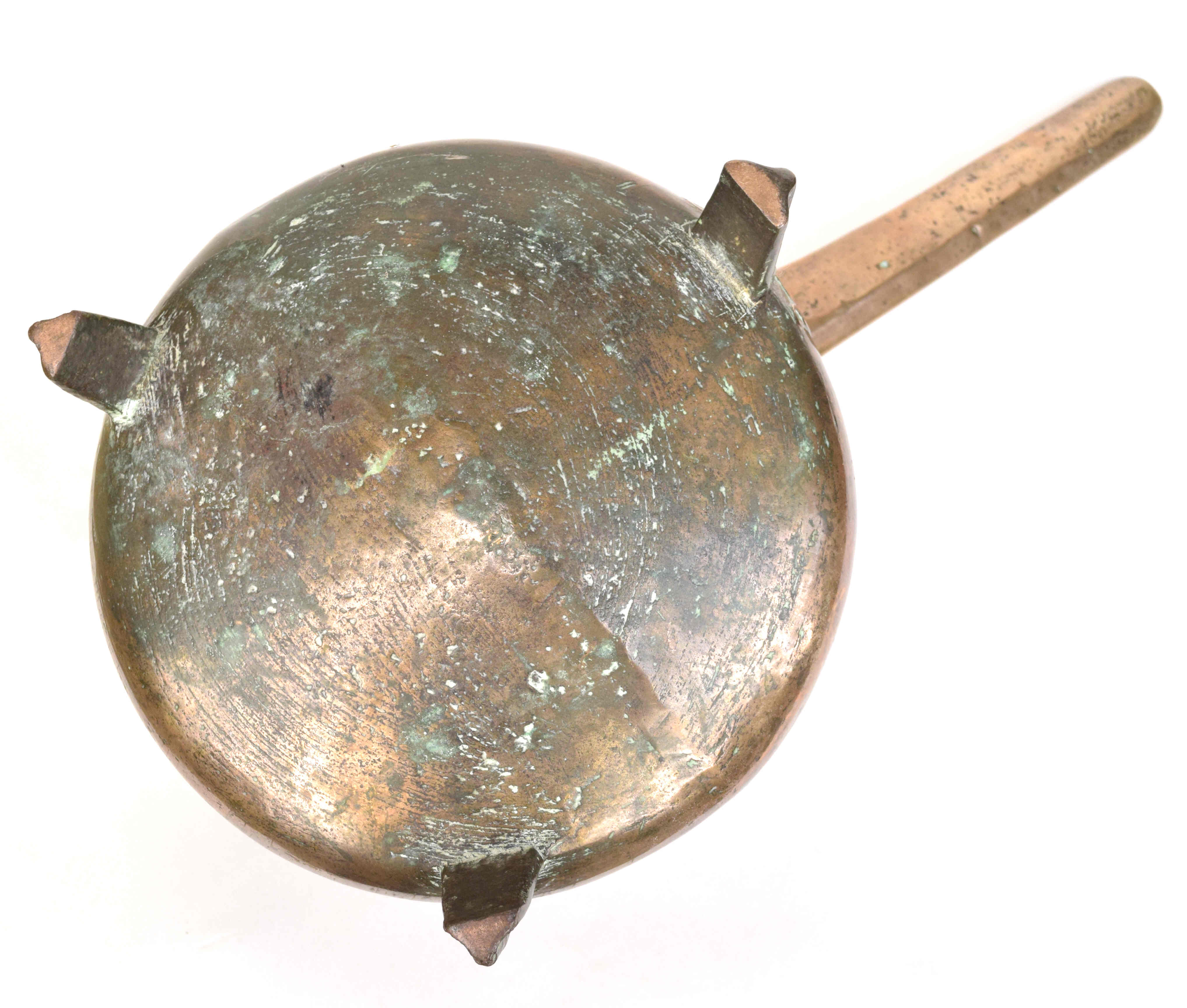
This loam cast, leaded bronze posnet stands on three shortened ribbed legs. Its slightly convex base has a flash line, showing where the two halves of the vessel are joined together, and a rounded sprue, where the metal was poured into the mould.
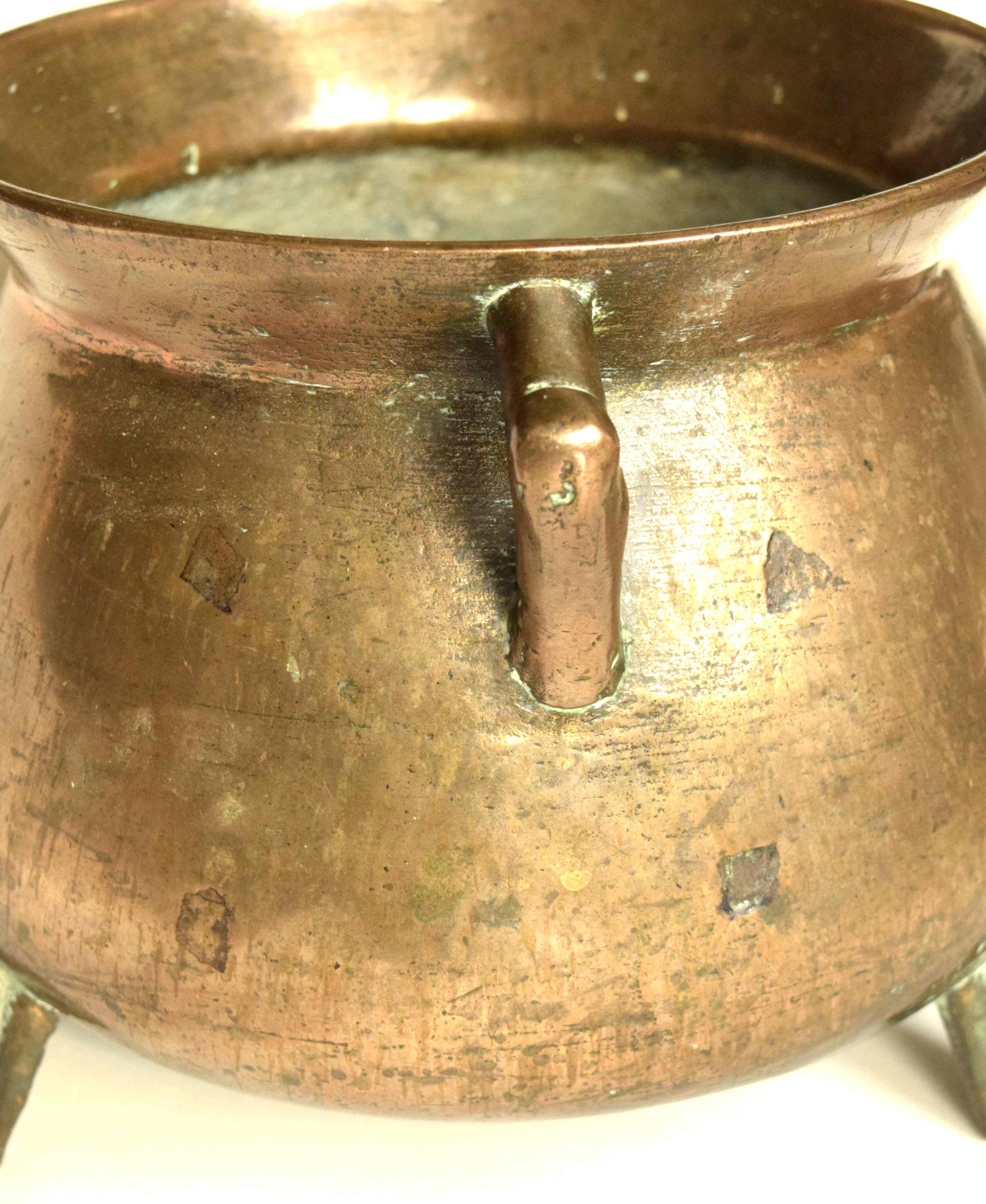
There is an angular lug on one the side of the pot and on the opposite side a handle with an open supporting brace directly underneath.
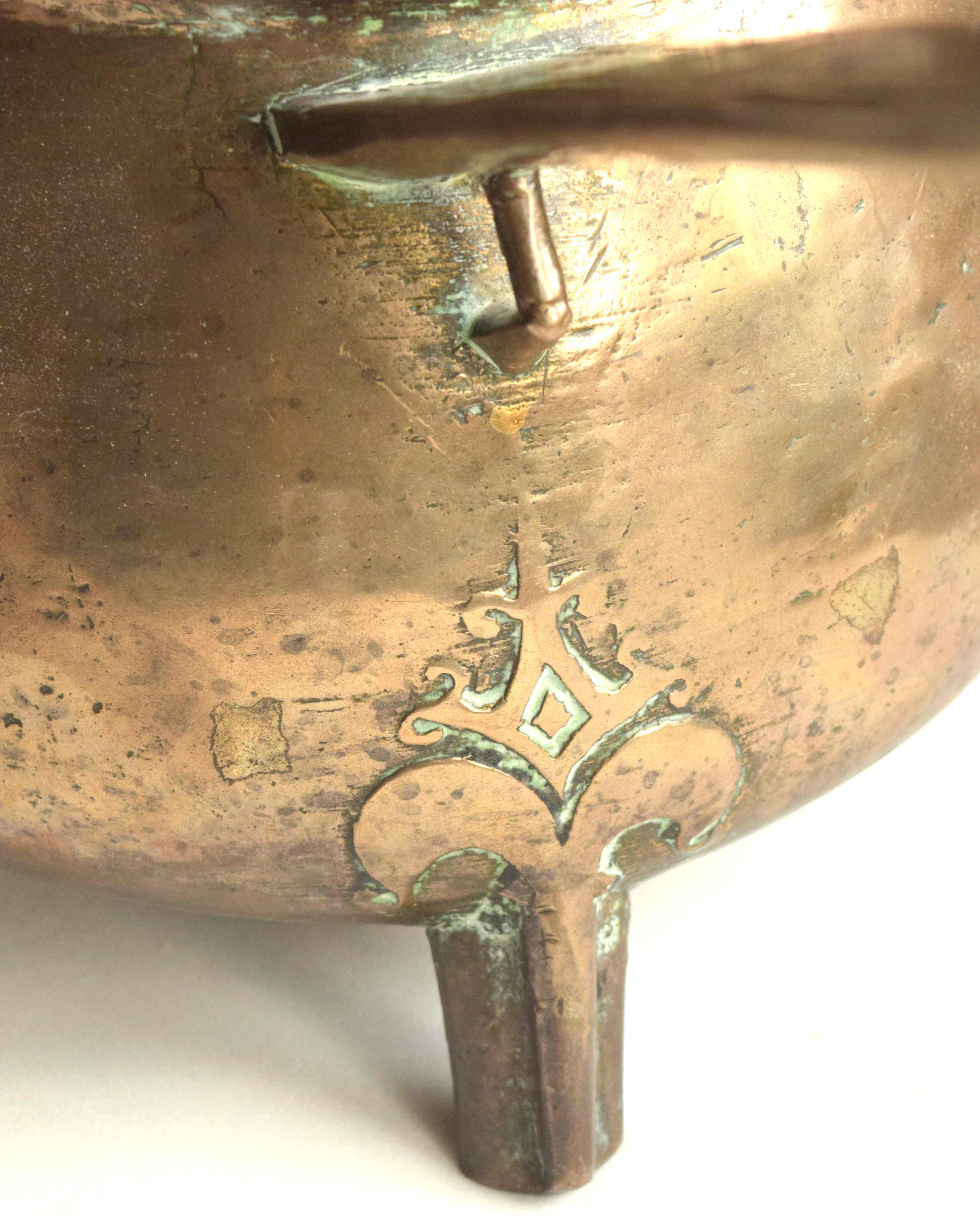
The handle has an inscription which is now too worn to read, but two posnets in the British Museum [BM 53,6-11, 1. and BM 1958, 2-3, 1(S)] have similarly inscribed handles which, although also very worn, were both cast from the same pattern.(see Butler & Green, 2003: pp 72 – 3). The reconstructed lettering of the handle reads ATRE X TAMAS HACh which can be transcribed as ‘From the hearth of Thomas Hatch’ from the French word âtre, meaning hearth, and the Latin atrium, originally a room blackened by smoke.
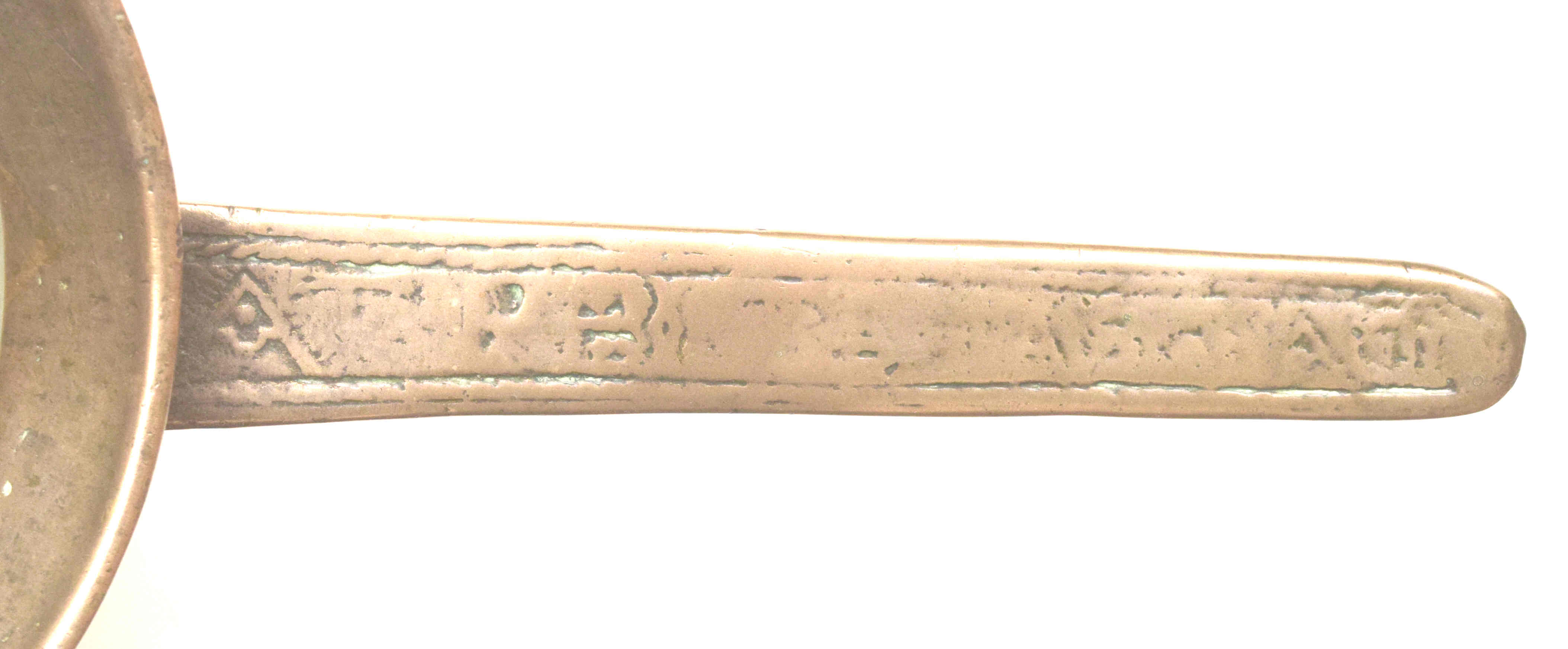
Several chaplets or spacers, which were used during manufacture, can be seen on the body of the posnet, especially at the front and below the long handle, together with a decorative motif that extends from the rear leg. This motif is similar to those found on pots made by Edmund Giles and may be indicative of some link to the foundry of Thomas Hatch.
References:
- Roderick Butler and Christopher Green, English Bronze Cooking Vessels & Their Founders 1350-1830, 2003.
- Robert Deeley with Andrew Crawforth & David Pearsall, The Cauldron, The Spit & The Fire, How We Cooked With Fire From Downhearth To Bargrate, 2011.


